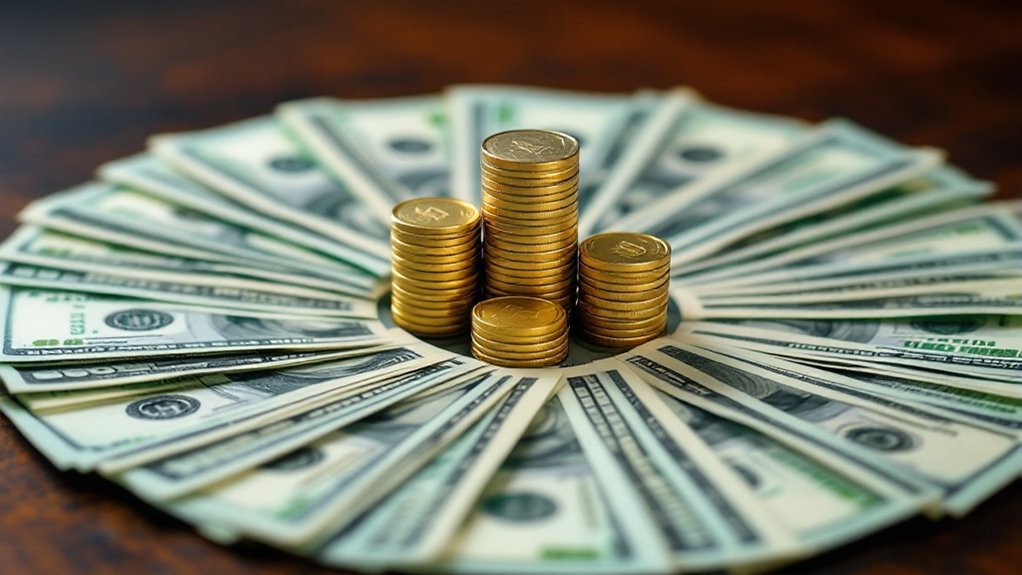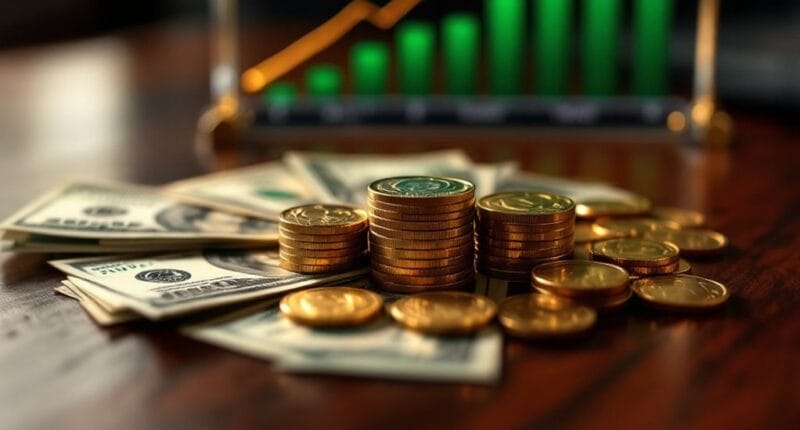Dividend yield tells investors how much cash they can expect from stock dividends compared to share price. It’s a simple ratio: annual dividend divided by current stock price, times 100. The S&P 500’s average yield hovers around 2.91% – not too shabby. Mature companies tend to offer better yields than flashy tech startups. But watch out – super high yields can be red flags. There’s always more to the dividend story than meets the eye.

Money talks – and dividend yield speaks volumes about a company’s willingness to share the wealth with its shareholders. It’s a simple ratio that packs a powerful punch: take the annual dividend per share, divide it by the current stock price, multiply by 100, and boom – you’ve got your dividend yield percentage. This little number tells investors exactly how much cash they can expect to pocket relative to their investment. Some successful companies like Verizon have consistently delivered impressive yields of around 5% for over a decade.
Let’s face it – some investors are in it for the steady income stream. These dividend hunters use yield to compare different stocks, almost like shopping for the best return on their money. But here’s the catch: a sky-high yield isn’t always a golden ticket. Sometimes it’s just a red flag waving frantically in the wind, warning that something’s not quite right with the company’s finances. A decline in share price can artificially inflate the yield, making it appear more attractive than it really is.
The truth about dividend yields is they’re as dynamic as the market itself. When stock prices tank, yields shoot up – basic math, really. But smart investors know to look deeper. They check if the company’s actually earning enough to keep those dividend checks flowing. Board approval is required before any dividend payments can be distributed to shareholders. Mature companies, the ones that have been around the block a few times, typically offer more reliable yields than their younger, growth-focused counterparts.
Different sectors tell different dividend stories. Utilities and real estate companies often sport juicy yields, while tech companies might offer yields that look downright stingy in comparison. The S&P 500’s average dividend yield hovers around 2.91% – a useful benchmark for reality-checking expectations.
Time reveals all in the dividend world. Changes in yield over time can signal shifts in a company’s fortunes or strategies. Rising yields might mean better profits or falling stock prices. Falling yields could indicate growth plans or trouble ahead.
It’s all part of the bigger picture that investors piece together when deciding where to park their cash. In the end, dividend yield is just one chapter in a company’s financial story – but it’s one that definitely deserves a careful read.
Frequently Asked Questions
How Often Do Companies Typically Pay Dividends to Their Shareholders?
Companies typically pay dividends quarterly in the United States, while monthly payments occur in some REITs and MLPs. European firms often prefer semi-annual distributions, and annual payments are less common.
Can Dividend Yields Predict a Company’s Future Stock Performance?
Research indicates dividend yields can help predict stock returns, showing significant correlations with future performance. However, they should be considered alongside other metrics for thorough investment analysis.
What Happens to Dividend Yields During Market Downturns?
During market downturns, dividend yields typically increase as stock prices fall while dividend payments remain constant. This mathematical relationship often makes dividend-paying stocks appear more attractive to income-seeking investors.
Are High Dividend Yields Always Better Than Low Ones?
High dividend yields aren’t necessarily better than low ones. While they offer more income, they may signal financial distress or unsustainable payouts. Lower yields often indicate growth potential and dividend stability.
Do All Stocks in the S&P 500 Pay Dividends?
No, not all S&P 500 stocks pay dividends. While over 400 companies in the index distribute dividends, some companies, particularly growth-focused ones, choose to reinvest earnings rather than pay shareholders.





